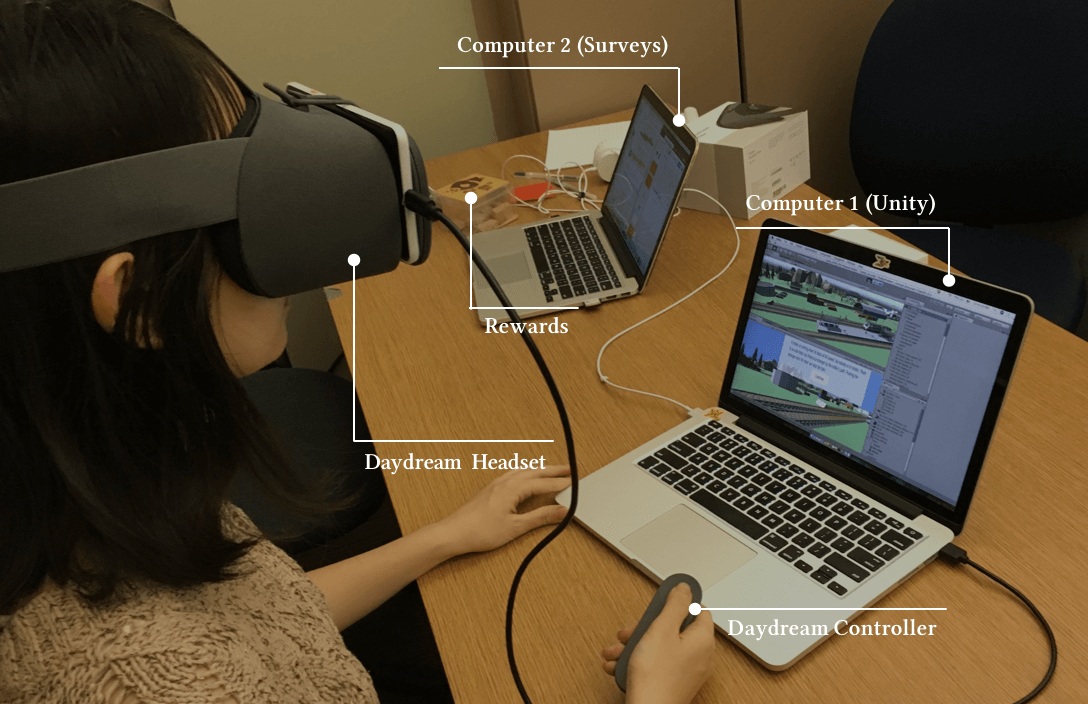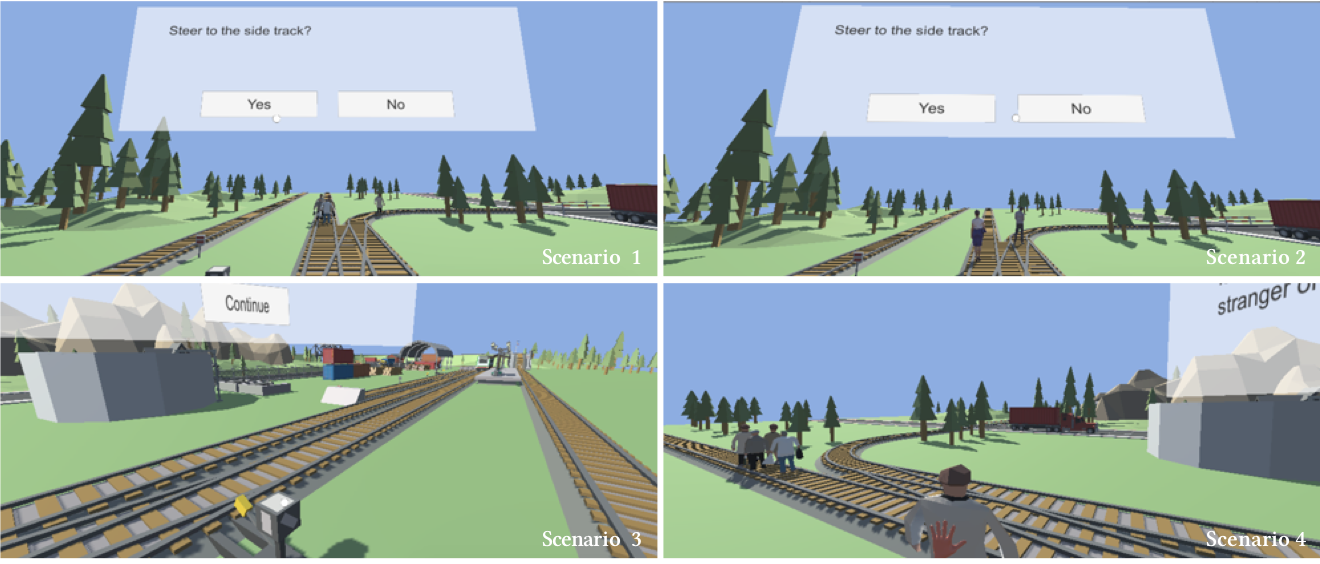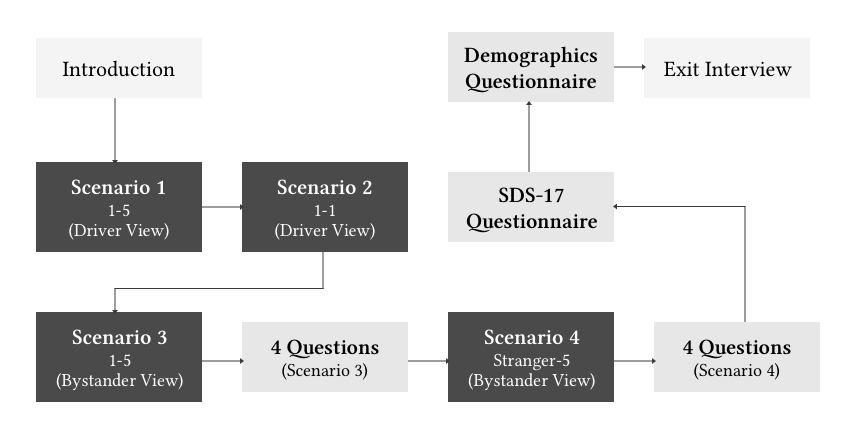|
Virtual Trolley
A VR interactive simulation using Google Daydream, built on Unity in 2018. Through this project, we built a VR simulation to replicate the classic trolley problem study on moral dilemma. We ran the experiment with a few participants using Daydream with the developed VR scenarios on Unity. After comparing our results with data collected using traditional methods in the literature (interview and field experiment), we showed that people display a similar moral reasoning pattern in VR compared to what has been found in text-based studies, which underlines the validity of using VR for moral decision making studies rather than using traditional self-report methods. Click here to watch the video demo of the Virtual Trolley VR simulation. |
|
Visual Design and the Simulation of Driving Trolley
In our scenarios, users has a fixed location in the scenes, which is the same as the camera location.All the interactions with the scenes are triggered by a UI dialogue, which we use to show explanation, instruction, and let users make selections with the pointer controller. As shown in the left figure, there were four scenarios in the study. Scenario 1: 1-5 Driver View. This scenario simulates a driver view. The straight track has five people standing on the track and the other diverted track only has one person stand on it. When the train stops, the UI dialogue prompts users of choosing whether they want to stay on the track or switch to the other track. Right before the train hits the people on the track, the screen goes black and only UI dialogue remains prompting users proceed to the next step. Scenario 2: 1-1 Driver View. This scenario has the similar setup and flow as Scenario 1, except now both choices have one person, a woman or a man. Scenario 3: 1-5 Bystander View. This scenario simulates a bystander view. The player camera is place on the side of the train track next to a lever which can divert the incoming train to the other track. Five people stand on the straight track and only one person stands on the diverted track. After users choose the whether to pull the lever, the train starts moving again and similarly the screen goes black right before the train hit the people on the track. Scenario 4: Stranger-5 Bystander View. This scenario is the same as Scenario 3, except instead of having a lever by the train track, a stranger is standing on the left of the player camera. A hand is on the back of that stranger to indicate the potential action associated with that stranger. The train stops either right before hitting the stranger or the group of people on the track (if stranger is not pushed). The screen turns black and a dialogue thanks users for completing all sees and prompts them to the survey. |
|
Results
For the complete analysis and results, please download our manuscript "Decision Making in Virtual Dilemma" here. |
| ||



